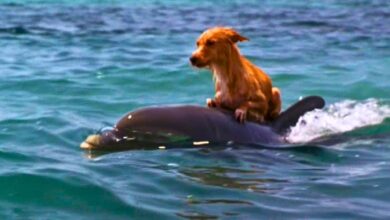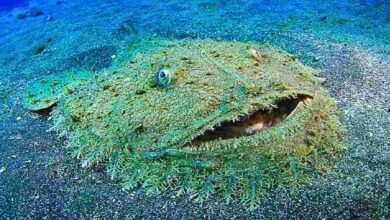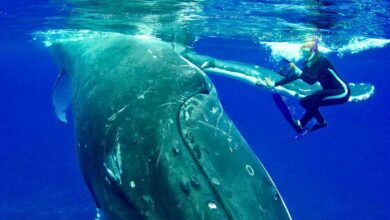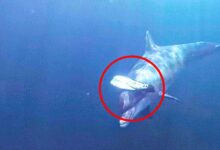World’s Oldest Manta RAY Celebrates More Than 40 Years on Great Barrier Reef

The rare manta ray known as Taurus was first photographed in 1982 gliding through waters of the southern Great Barrier Reef.
Four decades on, the melanistic ray with its distinct black belly is still leaving divers in awe.
“This year marks the 40th year since his first sighting and we had a sighting submitted of him about a month ago,” Asia Armstrong, a research fellow with the University of the Sunshine Coast (USC), said.
“He’s seen quite regularly at Lady Elliot Island. He’s been sighted over 50 times there and he’s never been seen anywhere else.”
Melanistic rays make up about 10 per cent of Australia’s east coast manta ray population.
Taurus was already a mature male when first photographed by Peter Allen in 1982.
It is believed to be the oldest known manta ray in the world, exceeding 50 years of age.
“We do have a fairly decent network of manta ray researchers around the world that compile these sighting databases,” Ms Armstrong said.
“No-one has come forward with another manta ray that’s been sighted over that many years.
“So as far as we know, Taurus is the oldest known recorded manta ray.”
While Taurus is the most sighted individual on the east coast, the ray isn’t the only wonder of the deep that calls Lady Elliot Island home.
The mutant pink manta ray
Inspector Clouseau is a three-metre-wide pink coloured ray that experts suspect may have developed from a genetic mutation.
“Similar to Taurus, the pink manta ray has never been seen anywhere else as of yet,” Ms Armstrong said.
The unique creature was last spotted by a member of Lady Elliot Island’s dive team in August.
USC’s Project Manta database has identified more than 1,500 individual manta rays off the east coast of Australia.
“Manta rays have this unique spot pattern on their belly. So each individual is born with this unique pattern, like a fingerprint, and that remains unchanged through time,” Ms Armstrong said.
She said anyone with photographs of the species could help contribute towards understanding their populations within Australia and neighbouring regions.
“When they’re photographed with that belly pattern, we can use that photograph to track them over time,” she said.
“We can track their movements, growth rates, all kinds of things just through these photographs.”









